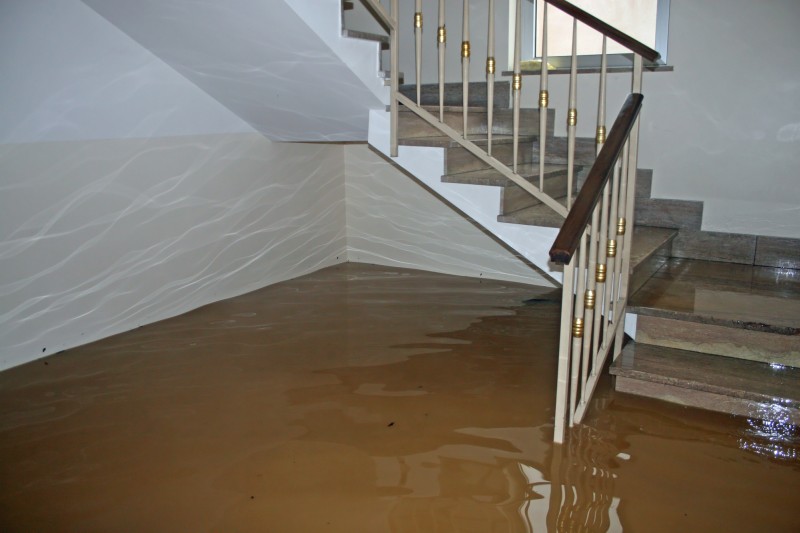Basement flooding is a serious problem faced by almost every household. Every year, insurance companies are swamped with over billions in flood damage claims, making it no stranger in households.

Most of the time, the flooding problem can be resolved if your sump pump is working. If not, then you should be ready to face a soggy nightmare.
Cleaning up the basement after a flood is a daunting task. But, you should start restoration services after flooding immediately to prevent any further damage.
Before you go down to start with the clean up process, you need to make sure that the situation is safe. There are many potential hazards in a flooded basement like structural damage, raw sewage, gas leaks etc.
Make sure you take proper precautions for the cleanup. Cleanup should never be at the expense of your personal safety.
Causes of Basement Flooding
As mentioned earlier, every basement has potential risk of being flooded. Here are some of the common reasons for basement flooding.
- Basement is exposed to elements for longer durations than any other part of the house. Rainwater becomes the worst enemy when it enters your basement. This is especially true with rainwater that saturates the ground around the foundation. It becomes destructive if unattended to. Lack of functional gutters and leaky foundations inevitably contribute to the flooding of your basement.
- Apart from this, foundation cracks also contribute to the flooding. After a heavy rainfall, moisture seeps through these foundation cracks, eventually transforming the basement into a damp, moisture-filled space. Any minute gap in your overall house structure acts as gateways for entry of rainwater and snowmelt. With water damage comes the flourishing of mold colonies. So, it is advisable to check for these gaps and seal them before they develop serious damage.
Steps to recover Basement after Flooding
Now that you understand the common reasons for flooding of your basement, it is time to know how you proceed to recover your basement after flooding.
You must be faced with questions like- Where should I start from?What should I do?Will I need help from professionals? Etc.
So, here’s a guide that might help you in recovering your basement from flood. You can follow these steps if you are determined to handle the situation yourself.
Personal safety comes first
As mentioned earlier, a flooded basement holds many potential hazards. Even a minute carelessness will cost you severely.
Electricity and water are a deadly combination. So, when you are dealing with water, make sure that you shut off the electricity supply to your basement.
If there is a water heater in your basement, be sure to shut off its gas supply. After this, unplug all the appliances, including the sump pump that failed to do its job.
It is advisable not to use any electrical appliances until the water in your basement is cleared. Try removing water with submersible pumps.
It will be better if you use an LED headlamp. This makes it easier for you to light up the area you want to work. Wear long boots with rubber soles, to secure your grip on the submerged flooring.
Dry out water
You need to focus on drying out the water as soon as possible. Stagnant water promotes mold growth, putting you at even more risk.
If the flooding is more than an inch deep, try removing the water with the help of a submersible pump and a hose setup that runs off the generator upstairs.
Be sure of the position of the pump’s drainage hose. It should be positioned outside, away from the house, towards the nearest drainage gates.
If the flooding is light, you can use a wet/dry vacuum. However, you need to make multiple trips upstairs to empty the vacuum tank, because of its limited holding capacity.
Inspect the damage
After clearing out the water, you will get a clear idea of the basement. Depending on the submerged time of the items, you can salvage certain items.
Get rid of tile flooring and soaked carpets and any other item that will prevent the basement floor from drying up. Check your basement for any signs of water damage and inspect the sump pump to check if it is still operational.
Put out drying equipment
Once you are done with removing all the water, check if it is safe to restore the power. After the power is restored, run multiple fans to circulate the air in the basement from floor to ceiling.
Position them at different levels to create cross-ventilation throughout the area. You can even rent industrial-sized models or dehumidifiers to speed up the drying process. This process takes time and is crucial to prevent mold growth.
Disinfect
Soggy surfaces promote mold growth. So, it is necessary to clean and disinfect all surfaces. Use the mixture of bleach and water to clean hard surfaces.
Use fungicidal cleaners to treat porous materials. Get rid of soaked carpets and any other wet materials. If the affected area is small, you can disinfect it yourself. However, it is better to seek professional help in case of extensive water damage.
Water damage shouldn’t be neglected. It should be treated immediately to avert any further damage. It is always best to seek help from professionals if your basement flooding is several inches deep.
Need Flood Damage Restoration Orange County? Check for Best Flood damage Restoration orange county.
Related Posts
- How to Stop Sliding Doors from Rattling – Causes and Solutions
- Cheap Ways to Heat a Room – Efficient and Budget-Friendly Solutions
- 11 Ways to Get Rid of Cooking Smells in a Small Apartment or House
- 11 Stores and Sites Like IKEA For Affordable Furniture and Home Products
- All About Polypropylene – Olefin Fabric Sofa Material
- 12 Different Types of Wood for Outdoor Furniture with Pros/Cons
Leave a Reply